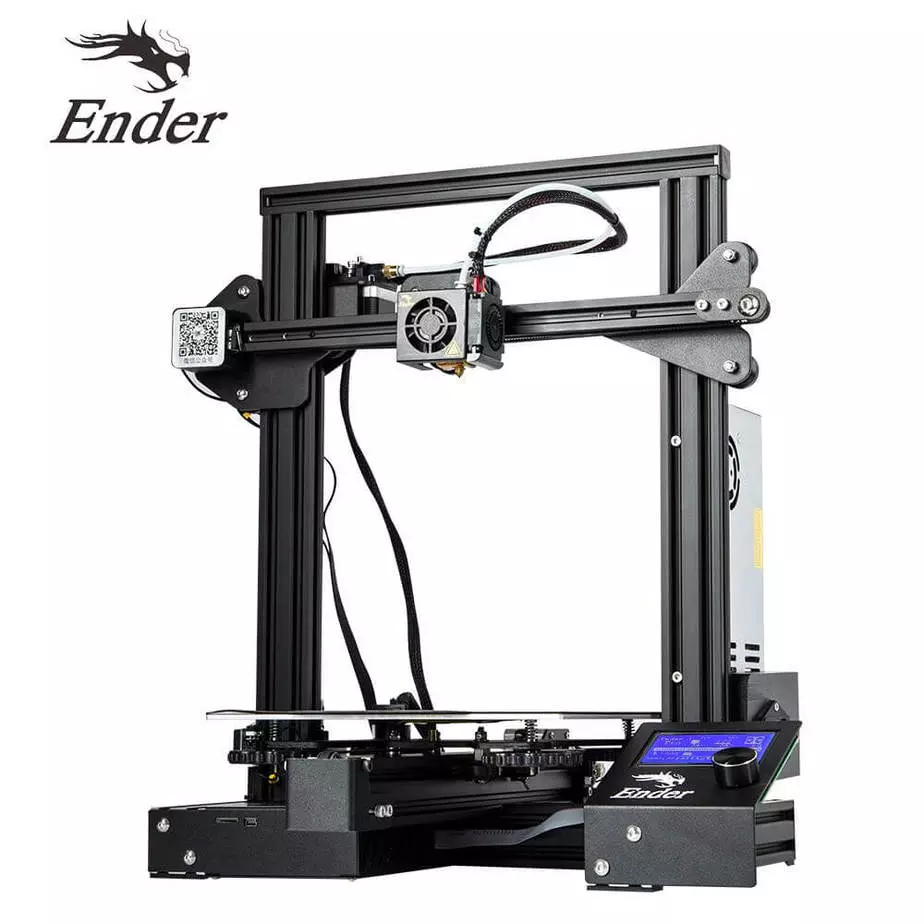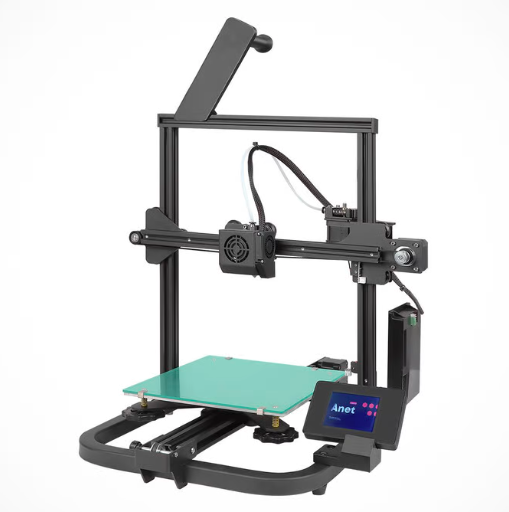Compare Ender 3 PRO vs A8 V2
Comparison between the best 3D printers
Choose the best 3D printer at the best price. The cheapest 3D printers are here.
Buy a 3D printer here with 3D Fila.
 |
 |
|
| Model | Ender 3 PRO[BUY Ender 3 PRO] |
A8 V2 |
| Printing Material | Filament | Filament |
| Buy Filament for Creality 3D Ender 3 PRO | Buy Filament forAnet A8 V2 | |
| Estimated price | $258,00 | $129,00 |
| Manufacturer | Creality 3D | Anet |
| Release Year | 2019 | 2021 |
| Print Volume [mm] | 220x220x250 | 220x220x250 |
| Printer Size [mm] | 440x440x465 | 428x441x486 |
| Weight [kg] | 6,62 | 6,2 |
| Power Loss Recovery | NO | NO |
| Enclosed printer | NO | NO |
| Bed Leveling | Manual | Manual |
| Filament End Sensor | NO | NO |
| Bed type | Heated | |
| Power supply system | Bowden | Bowden |
| Standard nozzle | 0,4 | 0,4 |
| Maximum Nozzle Temperature [°C] | 255 | 230 |
| Maximum Bed Temperature [°C] | 110 | |
| Maximum printing speed [mm/s] | 180 | 150 |
| Filament holder | YES | YES |
| Camera for supervision | NO | NO |
| Recommended filaments | PLA, TPU, ABS, PETG | PLA |
| Recommended slicers | Cura, Simplify, Slic3r | Cura, Simplify, Slic3r, IdeaMaker |
| Maximum Resolution [mm] | 0,1 | 0,1 |
| Processor | 32 bits | |
| Display | Mono | Display touchscreen 2,8'' |
| Power Supply | 24V / 360W Meanwell | 110/220V / 250W |
| Connectivity | SD / USB | SD / USB |
| Operating systems | Windows, Mac, Linux | Windows, Mac, Linux |
| Date of registration in the system | 2021-04-14 | 2022-11-10 |
| Release date | 2019 | 2021 |
| Extra features | The Ender 3 Pro stands out for its beginner-friendly assembly and easily modifiable structure. With a 350W power supply, it heats up quickly and has a simple application that offers good print quality. However, its motors and fans are noisy, and the interface seems outdated. Assembly is accessible, without the need for advanced techniques, and it has integrated belt tensioners. It includes a detailed guide and supports microSD card and USB. | The Anet A8 V2 is a Cartesian-XZ type 3D printer with a build volume of 220 x 220 x 250 mm, Ender 3 design and V-slot assembly. It has a 32-bit motherboard and touchscreen interface, promising ease of use. It uses open source firmware and has thermal failure protection. It stands out for its cable organization and the absence of a heated bed, focusing on energy savings and PLA printing. It comes with an external power adapter, aiming at greater safety, especially for beginners and educational use. |
| Support for multiple colors and materials (AMS and CFS) | NO | NO |
Notes * |
||
| Cost-benefit | 6 / 10 | 6 / 10 |
| Hardware | 0.5 / 10 | 0.6 / 10 |
| Tela | . | . |
| Print volume | 3 / 10 | 3 / 10 |
| Performance | 1 / 10 | 1 / 10 |
| [BUY Ender 3 PRO] |
Conclusion |
| In conclusion, when comparing the Creality 3D Ender 3 Pro and the Anet A8 V2, it is crucial to weigh their features, performance, and overall cost-effectiveness based on your specific needs. The Ender 3 Pro, despite being priced higher, offers notable advantages such as a larger maximum bed temperature, which allows for better adhesion and less warping, particularly with materials like ABS and PETG. Its faster maximum printing speed and reputation for solid build quality make it a favorable choice for users who may prioritize printing efficiency and quality. Moreover, its easy assembly, modifiability, and supportive community also add to its appeal, especially for beginners looking to enhance their 3D printing experience. On the other hand, the Anet A8 V2 stands out as a more budget-friendly option, providing essential features that cater well to beginners and educational purposes. It includes a touchscreen interface, which can simplify operations, and its open-source firmware allows for potential customizations. However, the lack of a heated bed may limit its material versatility. Ultimately, if budget constraints are a primary concern and you are primarily planning to work with PLA, the Anet A8 V2 may serve your needs adequately. Conversely, for those willing to spend a bit more for enhanced capability and versatility, the Ender 3 Pro is likely the better investment, reflecting solid value for its price while providing room for growth and experimentation in a wider range of materials. |

